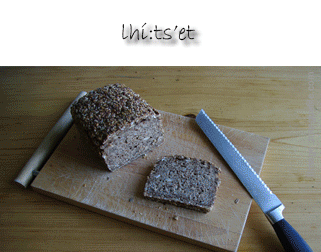Lhí:ts’et means ‘to cut (it)’. You can use it to talk about cutting any kind of object (wood, cloth, vegetables, etc.).
Pronunciation
Lhí:ts’et sounds like LEE-tsutt, except that the first sound is not a regular l but rather the Halq’eméylem hissy-l (lh). You make this with more friction, and no vibration in the throat.
There is also a catch in the throat (‘glottal stop‘) after the ts.
Audio: Elizabeth Herrling
-ing form
Lhí:ts’et has a special ‘-ing‘ (‘progressive’) form to describe an ongoing action, like this: Lhí:lhets’et – cutting (it) (audio here).
Elders make this type of –ing form by partly doubling (‘reduplicating’) the first part of the word.
Related words
Lhí:ts’et comes from the root word lhíts’ – to get cut. Other words based on this root include:
- lhíts’eqwem – to cut one’s hair (the –eqw ending marks ‘of the hair’ or ‘of the top of the head’)
- slhíts’es – wind-dried salmon (because the strips have many cuts)
- lhílhets’els – cutting wood, sawing wood (the –els ending marks a structured activity)


No comments yet.